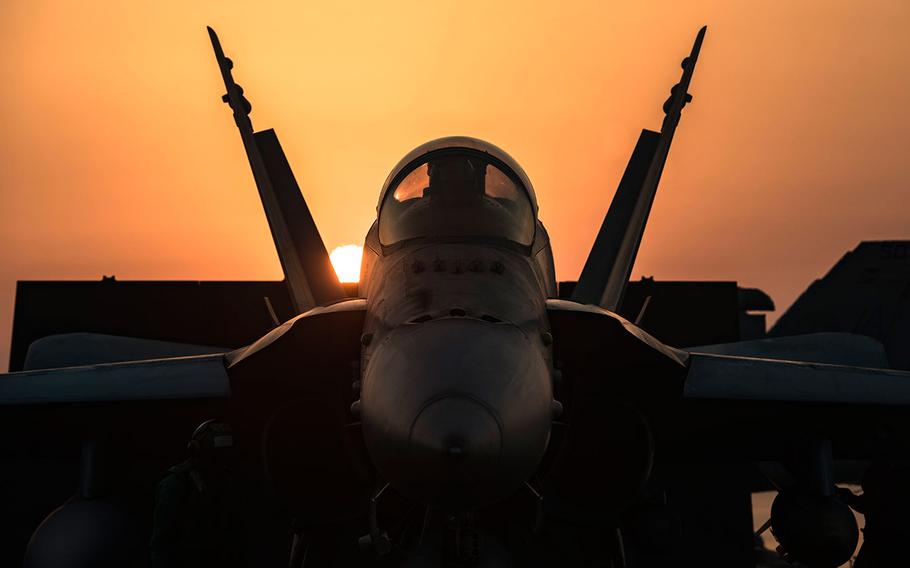
An F/A-18C Hornet assigned to the Wildcats of Strike Fighter Squadron (VFA) 131 prepares to launch from the flight deck of the aircraft carrier USS Dwight D. Eisenhower on July 31, 2016. (Alexander Delgado/U.S. Navy)
WASHINGTON — The Marine Corps has bolstered search-and-rescue efforts after an F/A-18C Hornet fighter jet crashed Wednesday off the coast of Japan, the service said in a statement.
The jet was conducting a training flight about 120 miles southeast of Iwakuni at about 6:40 p.m. Wednesday Japan time when the pilot ejected.
“Search and rescue efforts for the pilot … have expanded to a greater radius and include more rescue assets as the daylight increases,” a Thursday morning statement said.
The jet that crashed had been paired with another F/A-18C for the training flight. The second jet remained above the crash site until fuel concerns forced the pilot to leave, said Navy Capt. Jeff Davis, a Pentagon spokesman.
Marine Corps Commandant Gen. Robert Neller, speaking at a defense forum in Washington, D.C., told reporters that the news of another Hornet crash was disturbing.
“It's not exactly what I wanted to hear when I got up this morning, particularly about the pilot,” he said. “Hopefully we will be able to recover him or her.”
The Marines have faced a deadly year for its fleet of Hornet jets. Wednesday's crash was the sixth Hornet incident this year. The incidents have led to the deaths of two pilots and the destruction of seven aircraft.
An investigation by Stars and Stripes in September found the number of Hornet incidents resulting in significant damage to aircraft or injury or death to the pilot had jumped 44 percent since the automatic budget cuts known as sequestration took effect in 2013. Officials have linked the crashes to cost-cutting decisions to slash training hours for home-stationed pilots and sending the most mission-ready aircraft overseas.
In August, the Marines ordered a one-day stand down of its F/A-18C squadrons after a string of flight training crashes. The service has since emphasized restoring flight hours for home-based training during the last year.
“We’re in a pretty tough place,” Neller said. “Our plan [to restore readiness] is happening but it's not happening fast enough.”
Stars and Stripes reporter Corey Dickstein contributed to this story.
copp.tara@stripes.com Twitter:@TaraCopp